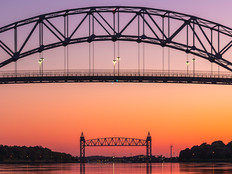Beacons Can Alter Government Communication with Constituents
Beacon technology may still be in its infancy, but state and local governments already have high hopes that these tiny transmitters will improve everything from museum visits to public transit.
“Beacons are essentially wireless technology that allows businesses or governments to wirelessly communicate with consumers’ mobile devices,” explains Cooper Smith, a senior analyst with BI Intelligence, Business Insider’s industry research service.
These small devices emit short-range Bluetooth low energy signals. If users have the right app and walk near a beacon, their mobile device receives the signal and prompts the app to deliver a message. The combination of low-cost (ranging from $2 to $100 per unit) and easy adoption make beacons a clear choice for Peter Tokar III, the economic development director for the city of Alpharetta, Ga.
Since the 2014 holiday season, beacons have promoted downtown businesses to Alpharetta shoppers. When participating customers walk into a store, an inconspicuous beacon mounted on the wall pings an app to welcome patrons, notify them of sales or deliver coupons. “Our retailers are excited and appreciative of our initiative to push more traffic their way,” Tokar says. The program is so successful that plans are underway to roll it out throughout the city.
Beacon Technology Signals Change
A report from BI Intelligence predicts that 4.5 million beacons will be in use in the U.S. by 2018. While the bulk will be used in retail, 1 million will be used in entertainment venues and government facilities.
Percentage of state CIOs who believe Bluetooth low energy beacons will have the greatest impact on their states
SOURCE: NASCIO, 2015 Midyear Conference audience poll, April 2015
“Of all the new technologies coming out, including wearables and 3D printers, beacons are going to have the biggest impact in government,” predicts Eric Ellis, chief technology officer for North Carolina’s Department of Environment and Natural Resources and director of the state’s Innovation Center.
Ellis says beacons can provide richer, more engaging experiences for visitors to attractions such as museums, aquariums and zoos. “Beacon technology can augment every one of those experiences,” he adds. Sites can do anything from reminding zoo visitors when they can watch animals being fed to providing engaging information to visitors that’s less expensive and more timely than brochures.
In addition to government attractions and recreational facilities, Smith sees plenty of public sector agencies researching and testing beacon technology. For example, New York City is evaluating beacons and apps for wireless subway payments. And several states are using beacons to track the traffic patterns of cars, cyclists and pedestrians, which will provide valuable data for municipal planning.
Obstacles to Beacon Adoption
One roadblock Smith sees for government adoption is convincing people to download and use apps. “That’s extremely difficult to do, even for an attractive company that offers coupons and discounts.”
Alternatively, Smith suggests governments tap popular private sector apps, such as Facebook, to interact with beacons. Facebook can easily recognize an agency’s beacons and serve up the desired content via the Facebook app.
“I think that’s inevitably how this whole system is going to mature over time,” Smith says.









